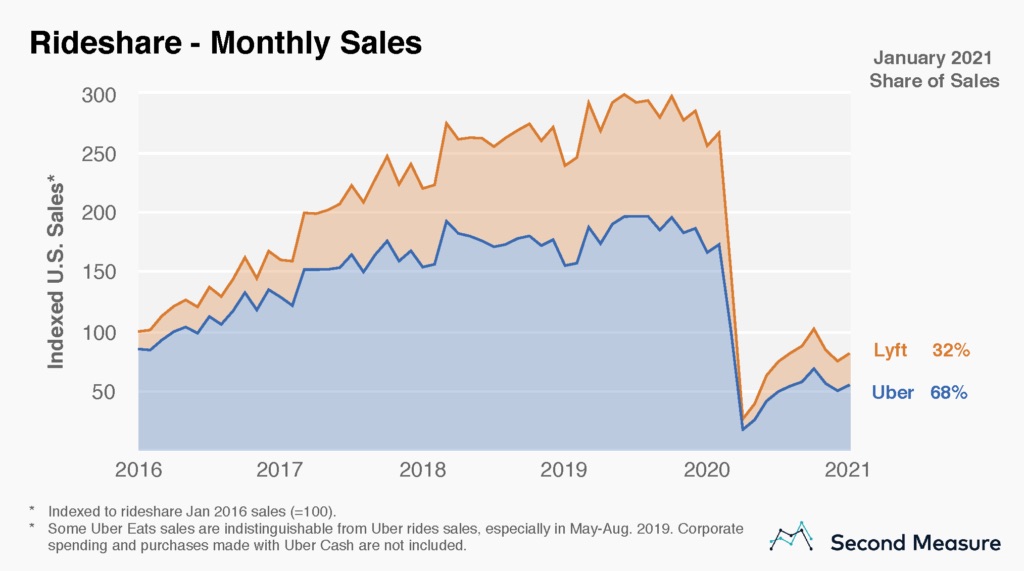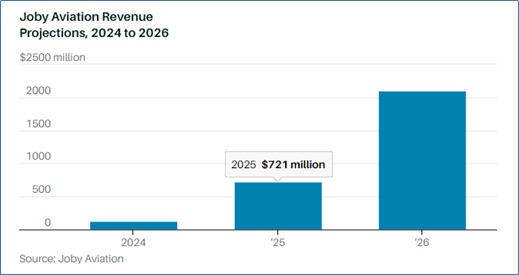Transportation as a Service (TaaS) is rapidly growing and is taken into account by many to be the longer term of transportation. Through TaaS, automotive ownership rates will eventually decline. As an alternative of owning a automotive, people will have the opportunity to purchase trips, miles or experiences without having to keep up their very own vehicle.
What’s TaaS – Transportation as a Service?
Not way back, owning a automotive was a mark of maturity. It was an indication of independence, in addition to a approach to get to and from work. Through the years, this example has steadily began to vary. Urban areas have grown, which has made public transportation more common. Due to carbon dioxide levels, mankind is now trying to find ways to scale back our carbon footprint. TaaS is one potential solution.
TaaS is a recent mindset. As an alternative of specializing in automotive ownership, TaaS involves renting vehicles and similar practices. As an example, Uber and Lyft are each examples of TaaS. As an alternative of getting to own your personal automotive, you need to use a ridesharing app to rent a automotive if you need a ride.
TaaS can be called Mobility as a Service (MaaS). While TaaS may involve an app like Uber and a human driver immediately, it will not all the time be the case. In only one to 2 years, Goldman Sachs expects the primary semi-autonomous automotive to change into commercially available.
TaaS is very important because today’s cars spend most of their time parked. Across the globe, the standard vehicle is idle during 95% of the day. Connected cars and rideshares can eliminate this idle time. As an alternative of multiple people using their cars to commute to work every day, the identical people could rent a automotive and forego automotive ownership.
What’s TaaS Technology?
In lots of cities, TaaS vehicles might be available 24 hours a day. While the typical person only uses their automotive about 4 percent of the time, a TaaS vehicle will typically be used for 10 times more minutes every day. TaaS will work like public transportation does today, but it is going to mix private transportation providers right into a gateway like an app. Then, people can access the gateway each time they should reserve and pay for a ride.
Should you drive 15,000 miles per yr, you possibly can expect to spend a mean of $8,469 a yr in your vehicle. You may have to pay for automotive insurance, gas, maintenance costs and automotive payments. By switching to TaaS, you would save a whole bunch or hundreds of dollars per yr.
Aside from saving money, many individuals select TaaS to get more free time. Should you do not need to drive in your commute, you possibly can work on something else. Then, you possibly can enjoy spending time along with your family once you come back home. During your commute, you too can spend time learning a language, reading a book or having fun with your favorite hobby. In 2018, the typical American spent 225 hours commuting. To place this in perspective, it only takes 480 hours to learn Spanish. And It takes around 45 hours to drive from the Atlantic Ocean to the Pacific Ocean.
TaaS has already been adopted by a wide range of corporations. DoorDash, GrubHub, Amazon Prime Delivery and Postmates already deliver products to homes across the country. Through WaiveCar or Turo, you possibly can even lease your personal vehicle or discover a vehicle you possibly can lease. Other automotive rentals like Getaround, Zipcar and aGo will allow you to rent a vehicle each time you wish it. Meanwhile, Ridesharing, GoNanny, Uber, Zimride and Lyft offer rideshare services.
What Are the Consequences of Transportation as a Service?
The primary automotive dealership in the USA was established in 1898. Since that point period, dealerships have followed a reasonably basic business model. To forestall automobile manufacturers from competing with dealerships, many states required dealerships to serve because the middleman. Through TaaS and self-driving cars, this complete business model may change. Eventually, manufacturers may even sell vehicles on to consumers.
If consumers purchase a vehicle in any respect, it is going to only be for a brief time frame. While there are a lot of ways in which TaaS could possibly be implemented, one option is for a self-driving automotive developer like Tesla or Google to own a complete fleet of self-driving cars. Then, the shopper pays per mile or minute. Because self-driving cars don’t require a human driver, the associated fee of renting a vehicle will drop significantly.
Lower demand for vehicles signifies that there might be decreased demand for parking lots and garages as well. Normally, parking lots earn money by renting out parking spaces by the hour, day or month. If people pay for rides as a substitute of owning cars, the necessity for parking lots can be almost eliminated.
Is TaaS a Good Investment?
Firms that sell self-driving cars are more likely to perform well if TaaS leads the best way forward. Other manufacturers may struggle because fewer people might be purchasing cars. Moreover, corporations that run parking lots and garages will find yourself earning less. Eventually, many parking lots and garages in big cities could also be sold and converted.
TaaS is conveniently built around 4 macro trends. Aside from environmental, social and company governance (ESG) investing, it incorporates connectivity, the gig economy and electric vehicles. Eventually, the TaaS industry will change into an $8 trillion marketplace because it expands into areas like drone delivery, freight, distribution, food delivery and private transport.
These trends are already going down. As more people turn to TaaS options, automotive sales have fallen. Global vehicle sales dropped by 22% in 2020. Even without the pandemic, auto sales fell by 4% in 2019. This decline was the primary time in a decade that vehicle sales dropped.
TaaS Could Be 10x Cheaper
Based on some estimates, TaaS might be 10 times cheaper than traditional automotive ownership. Unlike traditional automotive ownership, you won’t should change the oil or search for a parking spot. Already, the market is responding to those changes. In 2009, Uber initially opened up. Inside just seven years, Uber was already booking more rides than the whole American taxi industry.
The iGeneration has fueled the surge in TaaS usage. Back in 1983, greater than 50% of teenagers had a driver’s license by the age of 16. In 2016, only 25 percent of teenagers had a license by the identical age. These young persons are using TaaS to hang around with friends, go to restaurants and visit their favorite shops.
Ultimately, the largest takeaway is that investors and cities need to organize now. Because the transportation industry adapts and changes, everyone else can have to regulate as well. From fewer parking garages to reduced vehicle sales, TaaS goes to have a significant impact on specific industries. While the general impact of TaaS goes to be positive, there might be significant growing pains along the best way.
Disrupters Reshape Industries
The next ideas come from Trends Expert Matthew Carr who has been closely following (TaaS) technology as a service and its broader impact.
Over the past couple of a long time, we’ve witnessed disrupters completely reshape industries. Facebook (Nasdaq: FB) and Twitter (NYSE: TWTR) launched recent ways for humans to speak and interact. Social media is now some of the powerful promoting platforms on the planet.
The streaming service Netflix (Nasdaq: NFLX) not only created a model that dozens of other corporations now emulate but additionally produces a few of one of the best content on the market. The studio receives scores of Oscar, Golden Globe and Emmy nominations and awards annually.
E-commerce giants Alibaba (NYSE: BABA) and Amazon (Nasdaq: AMZN) are the templates that the entire retail industry looks to copy. Tesla (Nasdaq: TSLA) is pulling the whole automotive industry toward mass electric vehicle adoption.
In real estate, there’s Opendoor Technologies (Nasdaq: OPEN) and Zillow Group (Nasdaq: Z). And in finance, there’s Bitcoin and the defi movement. Not to say the potential for blockchain. The list goes on and on. Many early investors in each of those disrupters have been rewarded with life-changing returns.
What are the TaaS Stocks?
Now, in TaaS, Uber (NYSE: UBER) and Lyft (Nasdaq: LYFT) have flipped the ride-hailing industry on its head. In actual fact, long-coveted taxi medallions in Recent York and other cities have plummeted in value. And these two stand to learn within the continued expansion of TaaS over the following couple a long time.
But these corporations are removed from equals. Lyft posted annual revenue in 2021 of $3.2 billion and is projected to leap greater than 41% to $4.33 billion in 2022.
Uber – because of Uber Eats and its recent acquisition of Drizly – posted revenue of $17.4 billion in 2021 and is projected to see 2022 revenue jump 28% to $22.32 billion.
And within the American ride sharing market, Uber is the more dominant force. It currently controls 68% of the market, while Lyft holds the remainder.

But what’s amazing is, that only a few consumers use each. That is an interesting data point. You see, many Americans depend on subscriptions to Netflix, Hulu, Disney+ and Amazon Prime Video. Though, on the subject of ride-sharing, only 10% of consumers use each Uber and Lyft.
Latest TaaS Technology Firms to Watch
But there’s a recent disrupter about to go public. Joby Aviation (NYSE: JOBY) is hoping to bring a few of this sci-fi magic to hundreds of thousands of commuters. Over the past 10 years, the corporate has developed a zero-emission, all-electric, vertical takeoff and landing (eVTOL) aircraft designed to leapfrog traffic congestion.
Each aircraft will carry one pilot and 4 passengers for journeys of anywhere from 5 to 150 miles at a top speed of 200 mph. These are the taxis of the longer term. The subsequent evolution in ride-hailing after Uber and Lyft. In actual fact, Uber was working on this concept but sold its segment to Joby in December. And it agreed to make a $75 million investment in the corporate.
Joby’s eVTOL taxi concept received a $394 million investment from Toyota (NYSE: TM) as well. The corporate’s goal is to save lots of 1 billion people an hour of commute time every day and to perform this in an environmentally friendly way.
Joby plans to have industrial passenger aircraft in operation as early as 2024. And once these are up and running, its business should, literally, take off.

Revenue Forecasts
The corporate forecasts it is going to make $721 million in revenue by 2025. And it projects that number will greater than double by 2026. By then, the corporate believes each aircraft will generate $2.2 million in annual revenue with roughly 850 plans in service.
Over the following decade, Joby plans to have a complete of roughly 14,000 vehicles generating $20 billion in revenue. It expects to have a presence in not less than 20 cities worldwide, with recurring revenue from its aircraft segment accounting for greater than 50% of annual sales.
These are lofty forecasts. But Joby is further ahead than its competitors are. Joby went public through a merger with the special purpose acquisition company (SPAC) Reinvent Technology Partners (NYSE: RTP).
This deal valued the corporate at $6.6 billion. That seems steep considering there isn’t any real revenue yet. But the chance for the air mobility market is upward of $500 billion within the U.S. Globally, this chance is forecast to top $1 trillion.
TaaS shouldn’t be only the longer term of transportation, it’s some of the dominant forces out there immediately. But over the following couple of years, it’s going to evolve rapidly and you would get in on the bottom floor.
Stay tuned for the most recent investing news on TaaS and other emerging technologies.